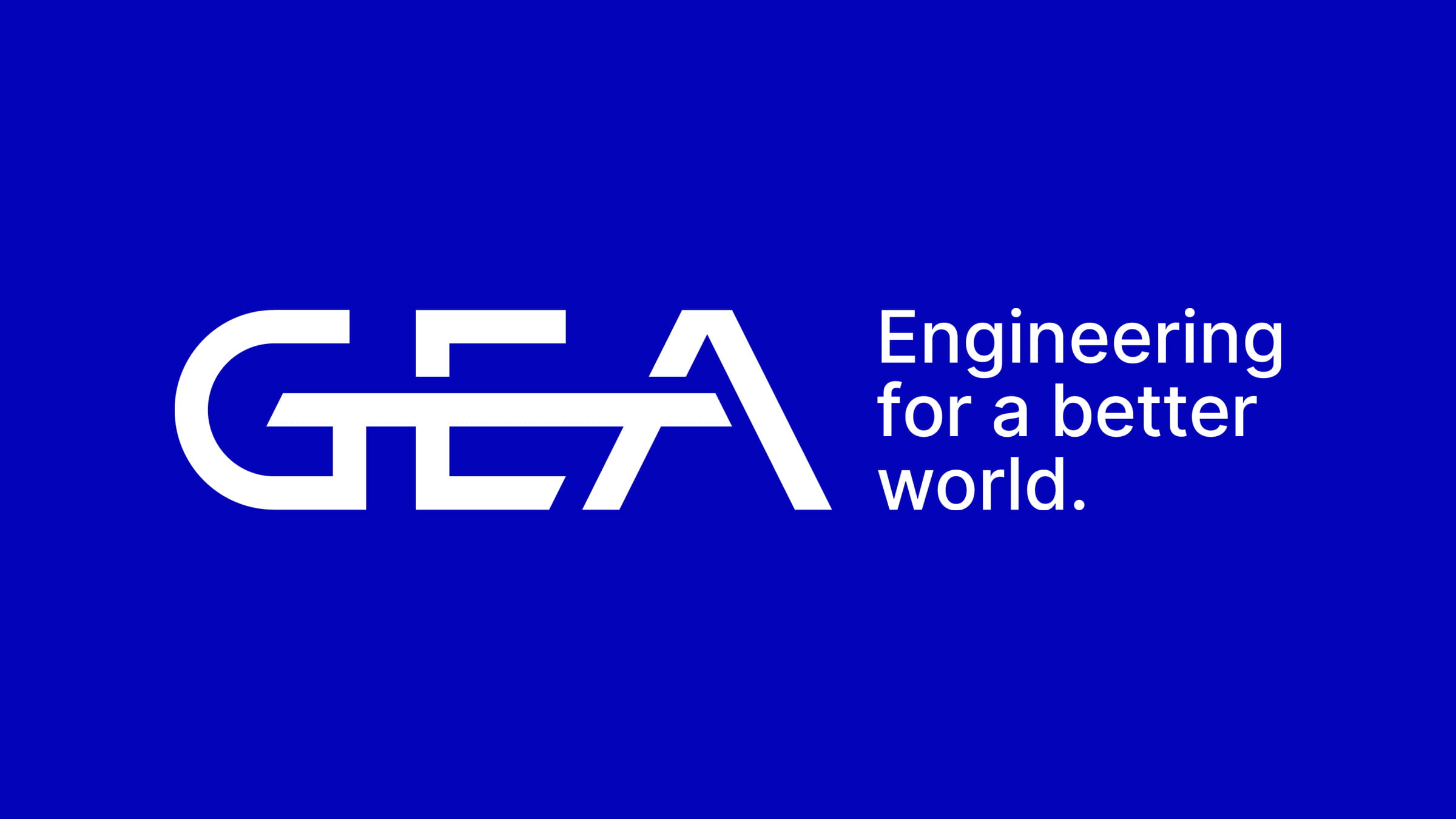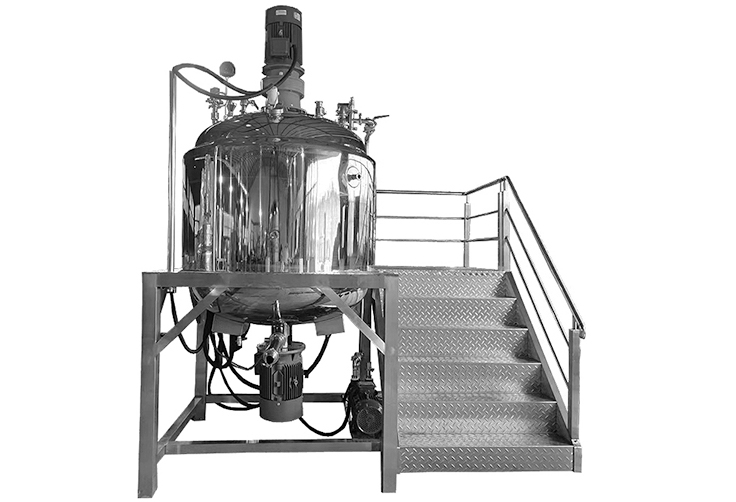2026 Homogenizer Selection & Maintenance: 7 Key FAQs
Discover expert tips on homogenizer machine selection & maintenance. Yuanyang offers CE-certified mixers & turnkey services. Contact us for industry-leading solutions!
- What is the principle of a homogenizer?
- What is a homogenizer mixer?
- How many types of homogenizer mixer are there?
- How to choose a homogenizer mixer?
- Top 5 homogenizer mixer brands
- 1. Yuanyang Machinery (China)
- 2. GEA Group (Germany)
- 3. SPX FLOW (USA/Global)
- 4. NETZSCH Group (Germany)
- 5. Microfluidics International Corporation (USA)
- What is the difference between a high shear mixer and a homogenizer?
- What is the use of a homogenizer mixer?
- What is the function of the homogenization?
- What is the standard operating procedure for maintenance?
- FAQs about homogenizer
- What is the typical homogenizer machine price for industrial use?
- Can a food homogenizer be used for cosmetics?
- What does a high‑pressure homogenizer do differently?
- Is an automatic homogenizer worth the extra cost?
- What is the difference between a homogenizer mixer and an inline mixer?
- How do I decide if I need a high shear homogenizer or standard mixer?
- Conclusion
What is the principle of a homogenizer?
A homogenizer machine works by pushing a fluid or semi-fluid stream through a narrow gap or valve under high pressure. This creates turbulence, cavitation, and shear forces that reduce droplet or particle size and make a uniform blend. In an industrial setting, the homogenizer mixer takes this a step further by combining mixing and homogenization in a single unit. This allows you to disperse phases while maintaining a consistent composition. For instance, when it comes to milk processing, a high-pressure homogenizer makes sure fat globules are broken up and spread out evenly so the product doesn't separate. If you know what a homogenizer does, you can get the most out of it for food, cosmetics, pharmaceuticals, or chemicals.
What is a homogenizer mixer?
A homogenizer mixer is a piece of industrial equipment that's really versatile. It can mix and homogenize at the same time, combining the capabilities of a conventional homogenizer machine with advanced rotor-stator or high-pressure technology. A homogenizer mixer can do premixing followed by high-shear or high-pressure homogenization in a single system, unlike a basic homogenizer, which relies on high-pressure valves or simple shear. This integration reduces the number of separate machines, makes production line setup easier, and improves consistency when processing emulsions, suspensions, or high-viscosity fluids such as milk, creams, or food spreads. Knowing what a homogenizer does and what a homogenizer mixer is helps manufacturers get product uniformity, yield, and downtime down, making it a crucial tool for modern industrial production. Modern homogenizer mixer machines are now designed with automation and precise control systems, allowing operators to achieve consistent results across large-scale production lines.
In industrial settings, a homogenizer machine or homogenizer mixer is key to getting stable emulsions and a uniform particle size distribution. A high-shear homogenizer, also known as an emulsion homogenizer, is ideal for ensuring that liquids in the cosmetics, dairy, and food industries remain smooth, appear better, and last longer on the shelf. Using a homogenizer machine for cosmetics or a food homogenizer reduces separation, gets rid of air bubbles, and makes the product work better. A homogenizer mixer is versatile because it can be used for both batch and continuous processing. You can control the quality, save money, and be more efficient if you select the appropriate equipment based on the thickness of the liquid, the size of the droplets, and the task at hand. It's important to look at the price and performance of a homogenizer machine to make sure you're getting a good deal for your industrial line.
How many types of homogenizer mixer are there?
| Type | Description | Key Application |
|---|---|---|
| Single‑Stage High‑Pressure Homogenizer Mixer | Uses a high‑pressure pump and valve to force fluid through at very high pressure, often combined with mixing head | Milk, dairy, beverage emulsions |
| Rotor‑Stator Homogenizer Mixer (High Shear) | Combines rotor/stator shear head with mixing vessel, ideal for emulsions and dispersions | Cosmetics, ointments, creams |
| Vacuum Homogenizer Mixer | Incorporates vacuum system + shear or mixing vessel to remove entrained air or gas | Cosmetics, pharmaceuticals, high viscosity products |
| Inline Homogenizer Mixer | Homogenizing head installed inline in production line, often preceded by mixer/pump | Large‑scale food/chemical production |
| Lifting Head / Batch Homogenizer Mixer | Batch vessel where head lifts in/out, useful for smaller scale or flexible production lines | R&D, pilot, medium‑batch custom production |
Each of these refers to a type of homogenizer mixer, enabling you to select according to your line capacity, fluid viscosity, batch vs continuous, and product type.
How to choose a homogenizer mixer?
The right homogenizer mixer depends on your production goals, material properties, and industry standards. No matter what kind of business you're in—food, cosmetics, pharmaceuticals, or chemicals—each application has its own unique needs when it comes to performance, durability, and ease of use. Here are the main things to think about:
1. Capacity & Viscosity Range: Just check the throughput—that's the amount of liquid your machine can handle per hour or per batch.
2. Homogenization Method: Decide between high-shear, high-pressure, or vacuum homogenizer mixers based on the type of product.
3. Target Droplet Size: Smaller emulsion droplets mean smoother textures and longer shelf life.
4. Cleaning & Sterilization: Keep an eye out for CIP/SIP and easy disassembly—perfect for industries that need to keep things clean.
5. Material & Build Quality: Stainless steel (like SUS304 or SUS316L) is great because it doesn't rust and lasts a long time.
6. Automation Features: Think about getting an automatic homogenizer with a PLC, recipe storage, and data logging to cut down on manual labor.
7. Application Fit:
Food industry: We've got high-pressure homogenizers for homogenizing milk, sauces, and spreads.
Cosmetics: We've got rotor-stator mixers for creams, lotions, and emulsions.
Chemical industry: Vacuum homogenizers are great for thick liquids or dispersions because they can get rid of air bubbles.
8. Maintenance & Cost: We'll go over the purchase cost, how often it needs to be maintained, and the lifetime operation cost.
Top 5 homogenizer mixer brands
-
1. Yuanyang Machinery (China)
-
Description: Leading in industrial mixers & agitators since 2008; offers homogenizer mixers, one‑stop turnkey service, and technical training.
-
Advantage: Full product line, strong technical support, turnkey solutions.
-
Disadvantage: Global brand recognition is somewhat lower than legacy European names.
-

2. GEA Group (Germany)
-
Description: Offers high-pressure homogenizers for dairy, food & beverage industries; strong R&D and global support network.
-
Advantage: Premium performance, energy-efficient valve systems.
-
Disadvantage: Higher cost and longer lead times.
-

3. SPX FLOW (USA/Global)
-
Description: Offers APV Rannie® and Gaulin® high-pressure homogenizers and mixers for various industrial applications.
-
Advantage: Century-old legacy, broad application base, reliable performance.
-
Disadvantage: May require local service infrastructure depending on region.
-

4. NETZSCH Group (Germany)
-
Description: Specialist in mixing, dispersing, and homogenizing equipment for chemical and food industries.
-
Advantage: High customization, robust for demanding applications.
-
Disadvantage: More niche; potentially higher technical complexity.
-

5. Microfluidics International Corporation (USA)
-
Description: Focuses on micro- and nano-scale emulsions and homogenization for pharma and biotech.
-
Advantage: Very high precision, suitable for micro/nano emulsions.
-
Disadvantage: Less suited for large-batch industrial production in food or chemical industries.
-

-
-
What is the difference between a high shear mixer and a homogenizer?
A high shear mixer (often a rotor-stator type) uses mechanical shear to mix, disperse, and break up particles or droplets, but it may not reach the same level of uniformity or droplet size reduction as a dedicated homogenizer machine, particularly a high-pressure homogenizer. A high shear mixer is ideal for blending, premixing, and dealing with thicker liquids. A homogenizer is designed to create fine emulsions, stable suspensions, and a consistent texture, often using pressure, cavitation, and turbulence in addition to shear. When it comes to industrial applications, you can start by premixing with a high-shear mixer and then feed it into a homogenizer mixer for some final refinement. Knowing the difference between these two tools can help you decide which one is right for the job. If you're mostly mixing, a high-shear mixer might do the trick. But if you need to get really fine droplets, have a long shelf life, and improve stability (like in a food homogenizer or emulsion homogenizer), then you're better off with a homogenizer or homogenizer mixer.
What is the use of a homogenizer mixer?
A homogenizer mixer is a must for various industries to get uniform product quality, fine emulsions, and stable suspensions. Some key industry applications include:
Food Industry: A homogenizer machine keeps milk, sauces, and spreads from going lumpy, sticking, or going bad. Food homogenizer technology makes for smooth emulsions.Food homogenizer technology makes for smooth emulsions, and in milk homogenization, it ensures a consistent texture and prevents cream separation, improving flavor and shelf life.
Cosmetics Industry: A homogenizer mixer makes creams, lotions, and ointments with pigments and active ingredients spread out evenly, which makes the product more stable. The homogenizer machine is great for getting a smooth texture in cosmetics.
Pharmaceutical Industry: A high shear homogenizer is key for making sure emulsions and suspensions are precise, which is essential for creating consistent drug formulations and dosages. The high-pressure homogenizer makes sure you can get the same result every time.
Chemical & Industrial Applications: A homogenizer machine or homogenizer mixer can make sure that the consistency of a liquid is always the same, that it's evenly mixed, and that it's stable. The industrial homogenizer makes the process more efficient and improves quality.
What is the function of the homogenization?
A homogenizer machine or homogenizer mixer can do a bunch of important things in the industrial setting. For example, it can make droplets or particles smaller, spread out the ingredients more evenly, improve how things look and feel, make things more stable and last longer, and help meet the rules and standards (like in making milk or cosmetics), and it can even make more products by stopping things from separating. For example, using a milk homogenizer makes sure the cream doesn't separate and keeps the flavor and texture consistent. In cosmetics, an emulsion homogenizer makes sure the cream is smooth and doesn't have any graininess. In chemical production, a homogenizer mixer makes sure that dispersions stay stable when stored or when used under stress. Basically, homogenization is key to making sure our products are top-notch, our processes are streamlined, and our customers are happy.Many factories also pair homogenizer mixer machines with liquid soap mixing tanks to ensure perfect blending and stable formulations in cleaning product manufacturing.
What is the standard operating procedure for maintenance?
Maintenance of your homogenizer machine or homogenizer mixer is crucial to ensure performance, longevity and ROI. A standard operating procedure might include:
1. Daily:
Give the mixing/homogenizing head a good cleaning. Also, check the seals and the valve or rotor-stator gap. Don't forget to inspect for any unusual vibration or noise.
2. Weekly:
Take a look at all the hoses, pumps, and connections to make sure they're in good shape. Don't forget to check the lubrication of the bearings or gearboxes, and make sure the rotor/stator or valve modules are aligned properly.
3. Monthly:
Run a test with water or a low-viscosity fluid to check the flow rate, pressure differential, droplet size, and particle distribution. Make a note of any deviations.
4. Quarterly:
Take a look at the wear parts (like valves, nozzles, and rotor/stator) and check for any wear and tear or corrosion. If you see any, replace them.
5. Annually:
For an automatic homogenizer, you'll need to take all the big parts apart, check the instruments (like pressure sensors and flow meters), check the finish and surface condition of the parts that touch each other, and update the software/PLC if needed. Also, make sure you've got enough spare parts on hand, show the operators how to shut down and start up safely, and keep an eye on the cleaning and CIP logs.
Following such a maintenance schedule ensures your industrial homogenizer or homogenizer mixer stays reliable, provides consistent quality and avoids unplanned downtime.
FAQs about homogenizer
What is the typical homogenizer machine price for industrial use?
The price depends on the capacity, pressure rating, and features. Small lab machines may cost a few thousand USD, while large industrial homogenizer mixers may range from tens to hundreds of thousands.
Can a food homogenizer be used for cosmetics?
Yeah, but the equipment has to meet sanitary standards, and the materials used in its construction and cleaning need to be cleanable. This is especially true for a homogenizer machine used for cosmetics, which needs appropriate seals, a finish, and possibly vacuum capability.
What does a high‑pressure homogenizer do differently?
A high-pressure homogenizer forces fluid through a narrow gap under high pressure, creating intense turbulence and cavitation. This process produces finer droplet sizes and more stable emulsions.
Is an automatic homogenizer worth the extra cost?
If you have a lot of production or frequent changeovers, an automatic homogenizer can be a huge help. Its automation, recipes, PLC control, and cleaning capabilities can significantly reduce downtime and labor costs, making it an excellent investment.Many manufacturer testimonials say that upgrading to automatic homogenizers has improved efficiency, consistency, and product quality.
What is the difference between a homogenizer mixer and an inline mixer?
A homogenizer mixer combines mixing and homogenizing in one unit, often batch or continuous, whereas an inline mixer simply blends liquids in line, but it may not reduce droplet size or provide fine emulsification.
How do I decide if I need a high shear homogenizer or standard mixer?
If your process needs a fine droplet size, stable emulsion, and improved texture (like in food, dairy, and cosmetics), you need a high shear homogenizer. If simple mixing is enough, you can use a standard mixer. Just make sure to review your product performance goals.
Conclusion
In summary, when you're picking the right homogenizer machine or homogenizer mixer for your industrial process, it's important to understand the principle of homogenization, know the difference between mixing and homogenizing, figure out the different types of equipment and which ones are suitable for your industry, check out the top brands, see the difference between high shear mixers and homogenizers, and make sure you understand the homogenization function. And don't forget to set up a solid maintenance routine. This 2026 guide will help you turn equipment selection into a competitive advantage. If you need assistance selecting the right homogenizer or setting up your production line, simply contact us and we'll set up a time to talk.

Ultimate Guide to Commercial Reverse Osmosis Systems 2026

Ultimate Storage Tank Guide for 2026: Selection & Innovations

Ultimate Guide to Filling Machine 2026 : Application & Selection

Emulsion Mixer Mastery: Industrial High-Performance Use

Ultimate Guide: Differences Between Homogenizer & Emulsifier
Sachet Packaging Machine
What type of film is the automatic packing machine suitable for?
The film materials include polypropylene film, polyethylene film, polyester film, nylon film and aluminum foil film and so on.
Aluminum Foil Sealing Machine
What’s the distance between the bottle neck and sealing head for the best sealing effect?
Generally, the distance between cap and sealing device is no more than 5 mm, and for large diameter bottle,make the distance 8 mm. The longer distance, the weaker power becomes, the larger bottle,requires larger working power.
Liquid Soap Mixer
Can you also provide the related production machines?
Yes, we supply the complete set of liquid soap production machines, such as filling machine,capping machine,labeling machine,sealing machine, and coding machine.
Vacuum Emulsifier
Does this vacuum cosmetic emulsifying mixer machine have double jackets for cooling and insulation?
Yes, the vacuum emulsifying homgogenizer mixer is with three layers, thus forming two jackets. The inner jacket is for heating and cooling purpose. The outer jacket is for insulation and protection purpose.
Medicine
Does Yuanyang’s pharmaceutical equipment comply with GMP standards?
Yes, all of Yuanyang’s pharmaceutical equipment complies with Good Manufacturing Practice (GMP) standards, ensuring quality and hygiene at every production stage, meeting the requirements of global pharmaceutical regulatory agencies.
Leave a message
Have any questions or concerns about our products? Please leave us a message here, and our team will get back to you promptly.








 Scan QR Code
Scan QR Code
Facebook
YouTube
LinkedIn
Whatsapp: +8613434139712
Guangzhou Yuanyang Machinery